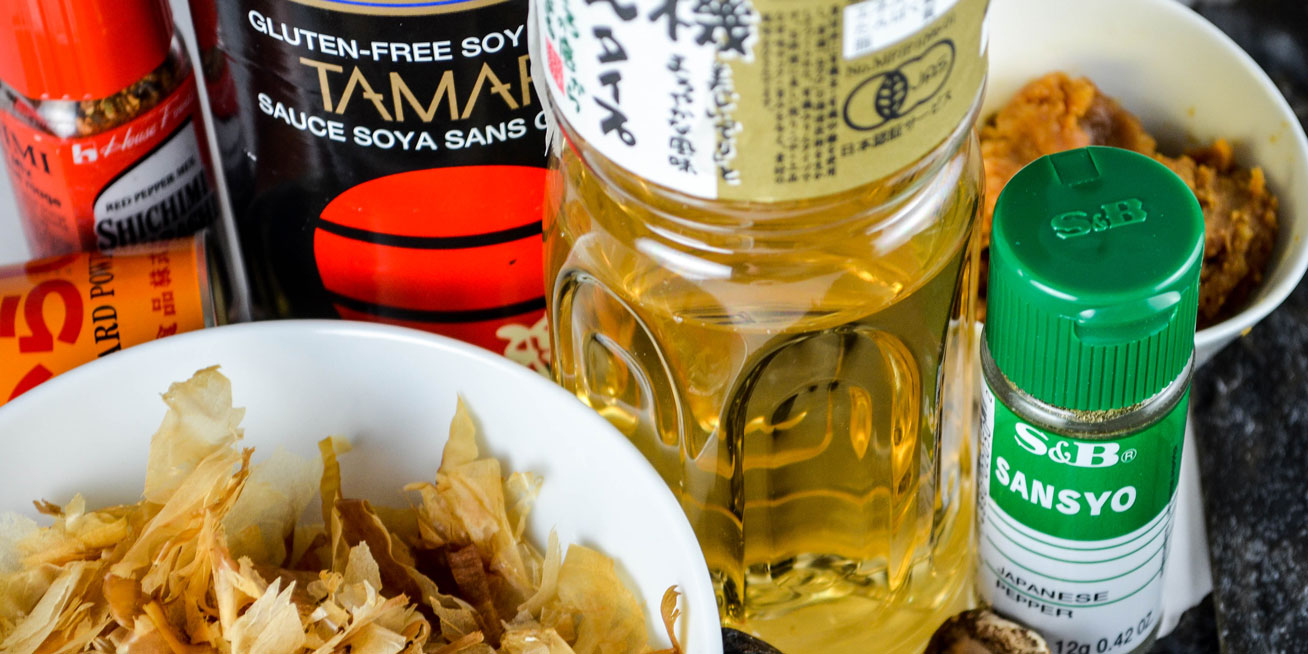Every month, Diversivore launches two new thematic features. This month’s second feature page feature is all about the Basic Japanese Pantry. Keep coming back for updates and recipes related to this theme, or subscribe to make sure you don’t miss out on anything new.
The Japanese pantry can seem a little odd to the uninitiated. After all, the most basic elements include dried seaweed (kombu), fermented soy beans (shoyu and miso), shaved dried fish (katsuobushi), and rice alcohol (mirin and sake). But these ingredients, at their purest and most basic, are surprisingly easy to work with.
Now let me backpedal just a little – I’m not going to start this out by pretending that all Japanese food is simple. The cuisine of Japan is enormously variable and inventive, and its preparation varies from rustic to wildly complex. This is why Japan was only the second country to have its cuisine declared an Intangible Cultural Heritage by the United Nations. But at its very core, Japanese cooking relies heavily on several pantry staples that are actually not that difficult to find, store, or use. Sadly, a lot of the Japanese food that we get exposed to in the West skips out on these basic, flavour-building ingredients, leading to final dishes that are mere shadows of their Asian contemporaries. Miso soup is a great example – most of us have had an unremarkable, overly salty miso soup served as an afterthought to a plate of sushi or a bento box. Quite often, these soups are little more than ready-made pastes added to hot water. But once you try a miso soup made with good miso paste and freshly made dashi stock, you’ll be amazed not only by the flavour, but by the simplicity of the preparation. It’s not a difficult dish to make; rather, it’s a dish the begs you to respect its simplicity.
So where to begin? Most of us have at least a passing familiarity with some basic Japanese ingredients, shoyu (soy sauce) coming in at the top of that list. But many other pantry basics might seem a little intimidating, especially when they come in packaging only minimally labeled in English. When you think about it, it’s a little surprising that we don’t use these ingredients more often given the enormous popularity of Japanese food outside of Japan. This month, Diversivore’s Pantry Pages will begin updating, and all of the new entries will be items from the Japanese pantry. You can expect these entries to detail and demystify, which is especially important given the fact that there are quite a lot of unremarkable versions of Japanese ingredients out there on store shelves.
I hope that the coming month will convince you to track down some of these staples and to work basic Japanese cooking into your repertoire. Stay tuned for updates, guides, and of course, lots of new recipes. Itadakimasu!




Comments
This is so great!